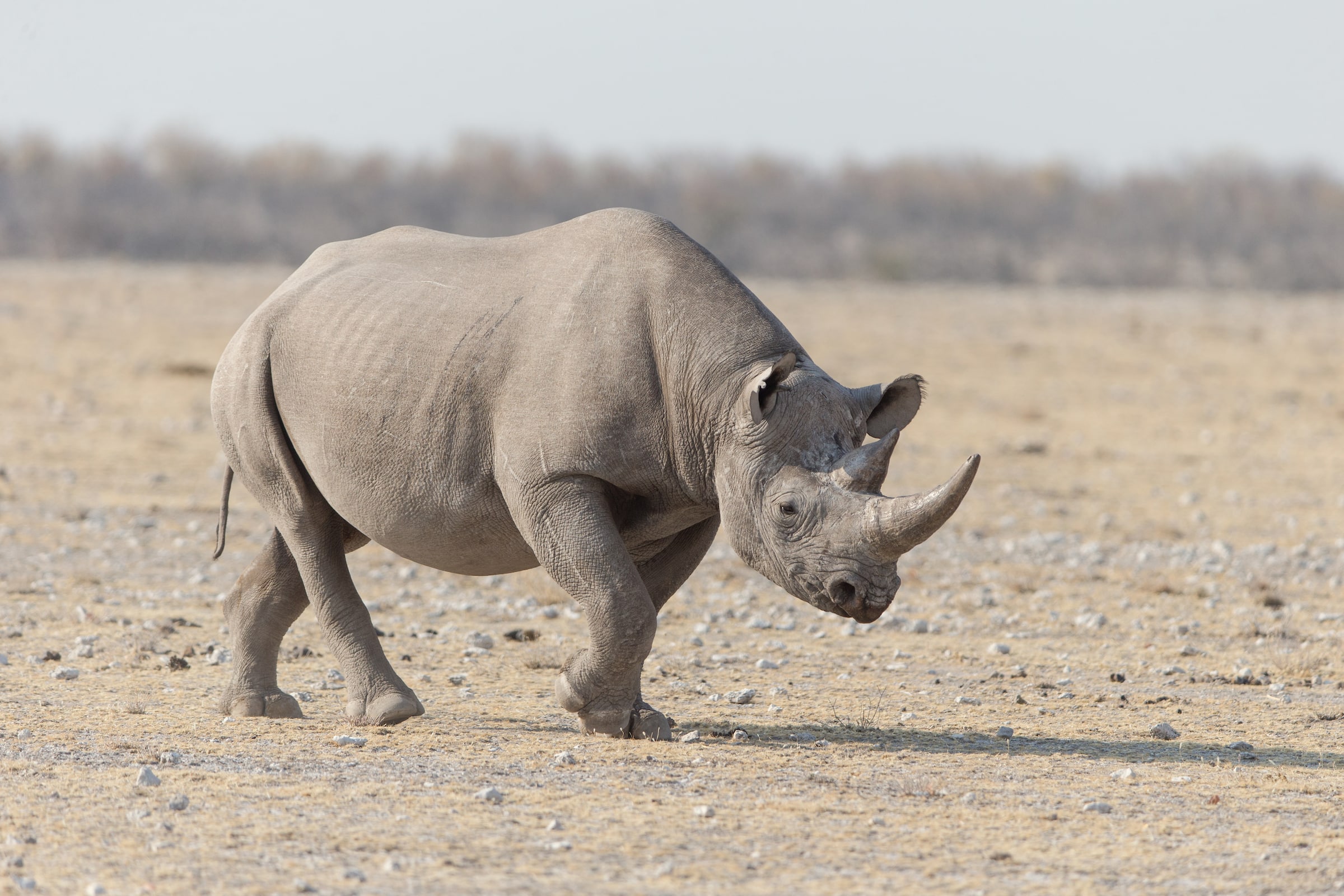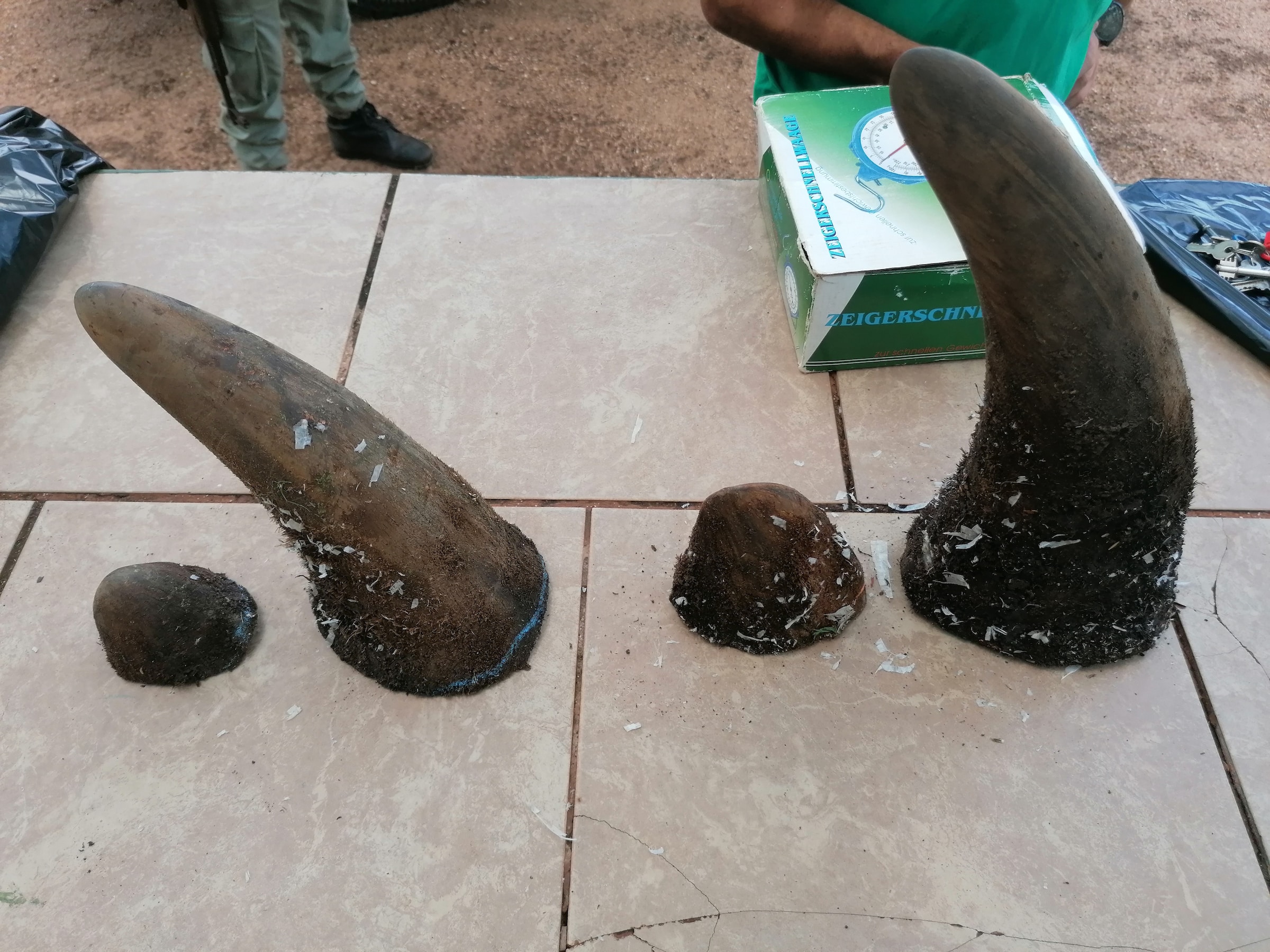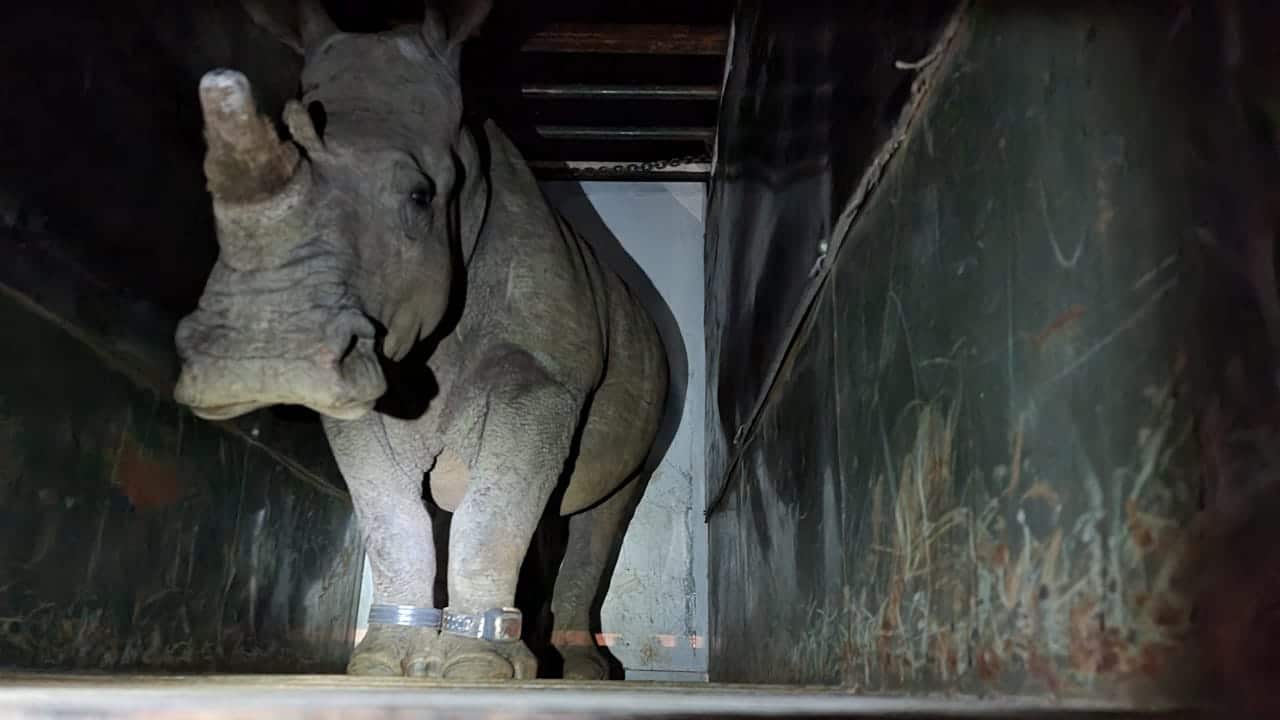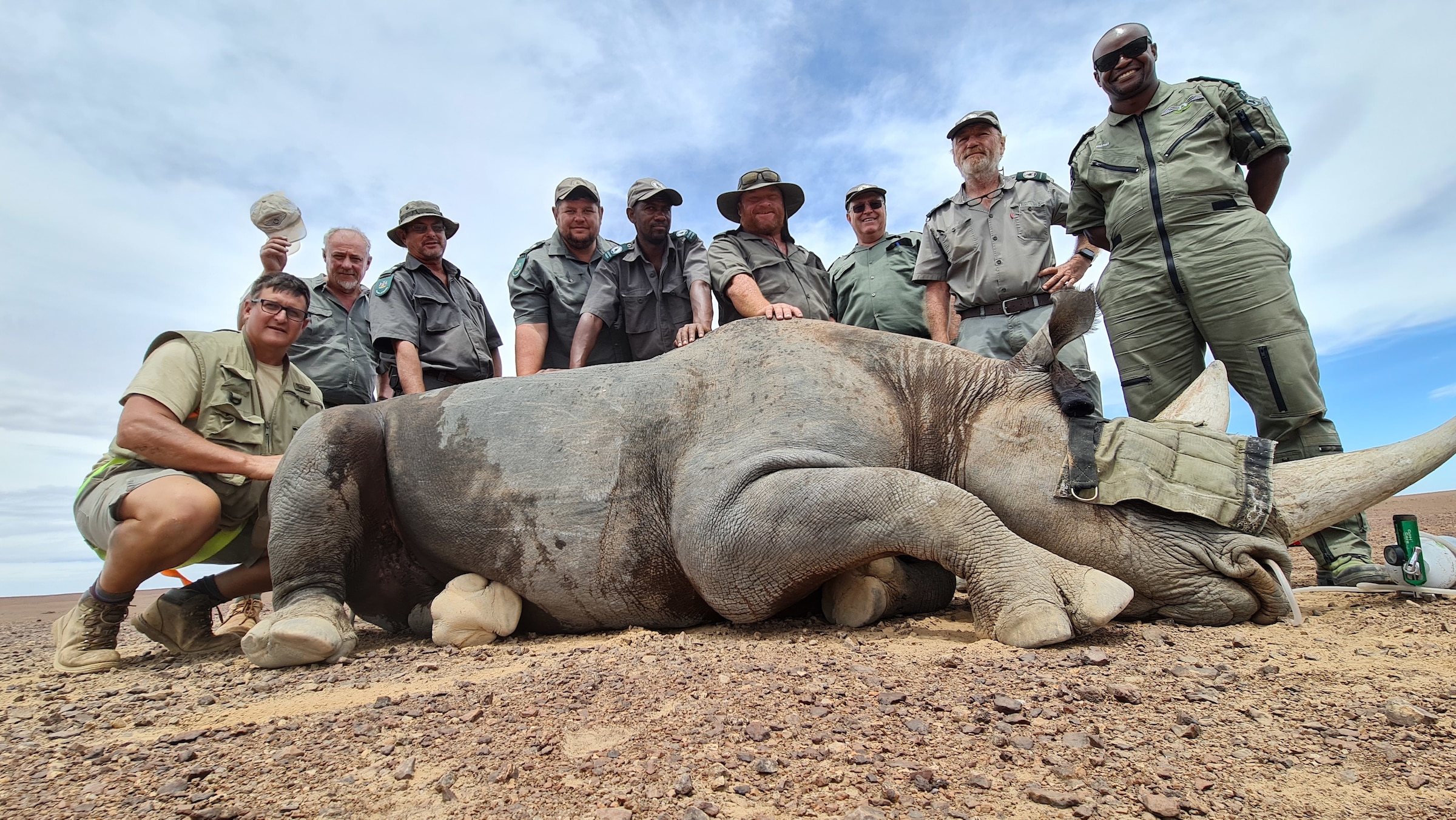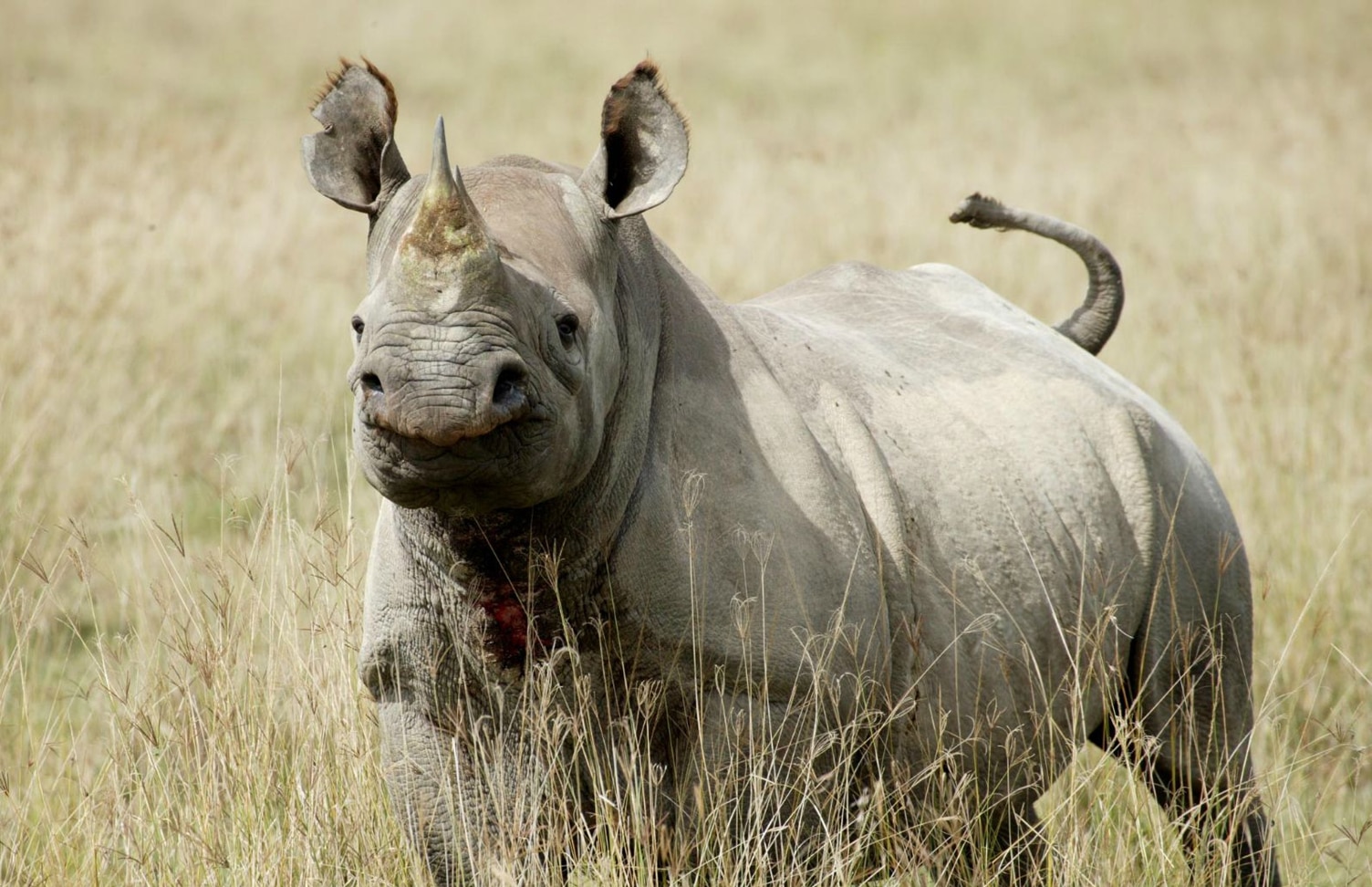Namibia is home to the largest black rhino population in the world—more than 2,000 individuals—and the second largest white rhino population—1,000 individuals. The Rhino Recovery Fund (RRF) is dedicated to supporting efforts to protect both species in this country. Recently, I traveled to northern Namibia to visit Save the Rhino Trust (SRT), a RRF grantee working with community conservancies and Namibia’s Ministry of Environment, Forestry and Tourism (MEFT) to protect black and white rhinos.
The purpose of this site visit was to check on the status of SRT’s and MEFT’s work to safeguard these important rhino populations, and to measure how well these organizations are collaborating with each other. Poaching has unfortunately been on the rise in Namibia—Nyae Nyae Conservancy recently reported its first-ever case of rhino poaching, the country’s Kunene region reported its first rhino poaching incident in over 40 months, and there’s been a significant spike in rhino poaching in portions of Etosha National Park where such activity had not previously been detected. Despite the collaboration of many management groups, communities, and political agencies, wildlife criminals still appear to be finding ways to penetrate protected areas and kill rhinos for their horns.
The RRF has previously supported the introduction of white rhinos to Nyae Nyae—the first white rhinos sent to a community-run conservancy in Namibia—and helped SRT establish a new base of operations there, so our investment in the success of this project is high. I was pleased to see how well SRT and MEFT representatives are working together and how seriously they’re taking this increasing poaching crisis. Fortunately, the rhino losses we’ve seen have not led to a significant decline in the overall population, so there’s hope that the upward trend for both black and white rhinos won’t be disrupted if the poachers can be apprehended and further poaching prevented.
These incidents are so surprising because Namibia has become a haven for rhinos due to high community buy-in; stakeholders for rhino conservation come from rural communities, government officials, and everywhere in between, so there has been a united effort guided by SRT and MFET to get everyone on board with protecting rhinos. The recent poaching reports have sounded alarms for all involved parties, and the heightened political sensitivity around this wildlife crime is driving an increased response. These incidents are a reminder for the constant need to be vigilant when it comes to securing rhino populations.
While in the Kunene region, I also utilized my expertise as a wildlife veterinarian to assist SRT and MFET in dehorning 42 black rhinos, a temporary and harmless measure to deter poachers from targeting them. I also visited Etosha National Park to help dehorn their black and white rhinos, since the largest number of poaching incidents occurred there. The remoteness of many of these desert locations also helps protect the rhinos from poachers, but strong protected area management is the key to ensuring the safety of these rhinos is secured.
The RRF will further support SRT’s work by inviting them to develop a rhino soccer league among local communities around Etosha National Park. Soccer is a powerful social engagement tool, so this league will help direct the attention and investment of local people to the needs of rhino conservation. The RRF will also be issuing a grant to the Namibia Nature Foundation to support their strategic activities to disrupt wildlife criminals.
It was a pleasure to visit Namibia and work alongside these stalwart grantees, and the RRF will continue to help them defend these vital black and white rhino populations from poachers.


